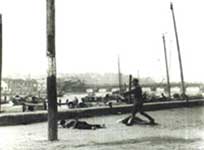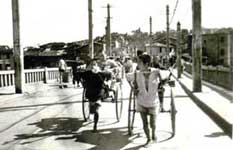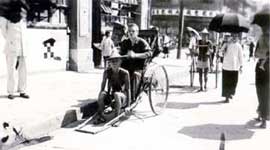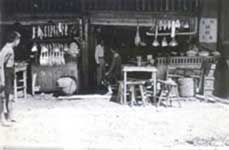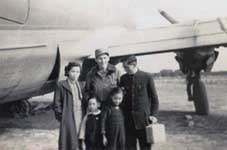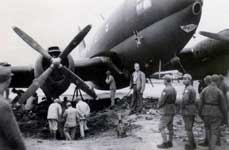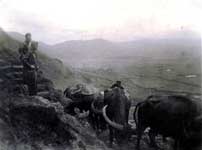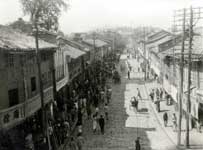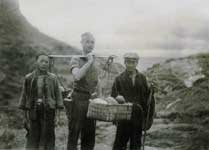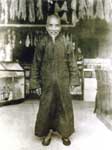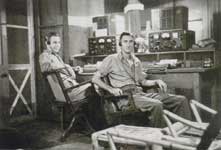Dedicated to the WWII veterans of SACO , US Navy Group China (the Rice Paddy Navy)
These pages reveal some of the story of the US and Chinese cooperation during World War II, working alongside to defeat the occupying Japanese. The struggle is highlighted through photos taken by W. Elsworth Smith (Smitty), SKD1c, USN, in India and China - 1945. Chinese-American interactions during WWII shaped both American and Chinese attitudes toward each other and continued to influence the relations between the United States and "the two Chinas" after the war. The Sino-American Cooperative Organization (SACO) operated in China jointly along with the Office of Strategic Services (OSS), America's first intelligence agency and forerunner of the CIA. SACO was commanded by General Tai (or Dai) Li, head of the Chinese Nationalist's secret service, and USN Captain Milton E. Miles, US Naval Group China, and was structured around about 2000 sailors and Marines training and operating with Chinese guerilla forces. Among all the wartime missions that Americans set up in China, SACO was the only one that adopted a policy of "total immersion" with the Chinese. The "Rice Paddy Navy" operated in the China-Burma-India theater, monitoring Japanese radio traffic, advising and training, rescuing downed American flyers, forecasting weather and scouting landing areas in anticipation of potential US landing to prepare for an invasion of Japan.
Americans committed to helping the Chinese repel the Japanese were often appalled at the brutality of war on two fronts. Invading Japanese were the targeted enemy, but political struggles in China included years of ruthless insurrection with Mao Tse-tung's Chinese Communist Part (CCP) and Chiang Kai-shek's Kuomintang (KMT), as well as the persistent rivalry among regional war lords. Regime violence during these times was a way of life as the CCP and the KMT battled for political control. The two factions had ostensibly joined forces for the fight to end the occupation, but in the waning months of the war, China, the US and the Soviet Union jockeyed for control of the new order. Some have condemned SACO experience as the epitome of American imperialistic policy of allying with Nationalist forces and especially of working with the head of the secret service, General Dai Li. But the reality is that those who served in this campaign never lost sight of their work to assist the guerrilla forces and the people desparate to regain their country. To the Americans living and working with the Chinese, it was a harsh challenge in a mysterious land, and an often unknown/forgotten sacrifice.
My father began Navy training as a Seabee in 1943, but then volunteered for SACO in the China-Burma-India theater. He has many stories of service in CBI area, and always spoke with highest regard concerning actions of SACO and Captain Miles, and his unit PACT Shot. He observed brutal and methodical actions from both the KMT and Communist forces in their fight to overthrow the Japanese, while at the same time they were preparing to establish their own political control. China was an exotic and dangerous place for American troops, and hopefully these pages and pictures will provide a rare glimpse into some of the excitement of the times.
Photographs on this page and more at the google Web gallery document some of the experiences in the closing months of the war in China. These photos were taken by Smitty, and developed when processing was available, and original prints were scanned from his album. Photos begin on the traintrip across India to Calcutta, airlift "the hump" over Burma, and show areas of China including Kunming, Chungking, Nantai, Foochou, Shanghai, and river scenes. (Most references in our documentation use the old Wade-Giles spelling for Chinese names). Please learn, enjoy, and share any information that these pages inspire.
Information on these pages was compiled from a number of sources, including my father's narratives and published citations.
